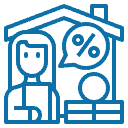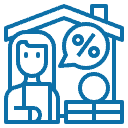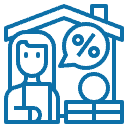Keeping your rental units safe and providing some measure of security to any tenants who move into your investment property is not only something you should consider but also your legal responsibility.
While most of your liabilities include how and where you distribute keys and what security measures you install into your property, it is always a good idea to take reasonable security precautions to ensure that your tenants and their property stay safe. Not only are tenants more likely to rent a property if they feel that it will provide the security they need, but reducing the risks of break-ins, burglaries, and other issues can greatly improve the overall satisfaction of your tenants and their willingness to continue living in your property.
The following include a list of reasonable security measures that you can undertake in most areas.
Keys
It is important that you a) keep a master key, b) carefully control who has access to keys and c) change the locks in between tenants. Your master key is best kept in a safe or other location, where it cannot be accessed by casual employees, even if you trust them. This is important, because you are liable if someone uses your key to get into an apartment or rental home and steals from the home.
It is also important to change the locks every time a tenant moves out in case they have copied keys, still have a copy, or there were issues during the move out. While most tenants are trustworthy, it is not worth the risk to allow them access. If you have a lobby key, it’s also a good idea to change that key if there were issues when the tenant moved out, and then redistribute new keys to the other tenants.
Importantly, replacing keys should apply to front and back doors, any storage facilities provided to the tenant, and if applicable, a mailbox.
Securing Doors and Windows
Securing doors and windows is part of your legal responsibility as a landlord, and you can consider the following steps as reasonable measures:
- Equip every exterior door with a fully functional lock and a deadbolt with 1-inch throws or longer.
- Equip sliding entry doors with a security bar
- Equip all windows with latches or keyed locks
- Install peepholes or security cameras for residents
- Equip lobby and building access doors with locks and install a buzzer or video system
Other Security Measures
Installing additional security measures can be a good idea, but are not always your responsibility. If you’re renting out single family homes, you can install a security system and include the cost of the subscription in the rental fee. You can do the same for apartments in high-crime neighborhoods, but make sure that tenants know they are paying for it.
Security Cameras
Security cameras aren’t necessary unless you are in a high-crime neighborhood, expect break ins, or the cost of rentals are high enough to offset the price.
Fences and Window Bars
These can actually deter new tenants from moving in. Try to leave them off unless absolutely necessary.
Gating
If you own a rental complex, installing a gated system with a perimeter fence is a great idea. You can use it to market security and privacy to new tenants without scaring them off. Just make sure you use an automatic gate.
Lighting
Great lighting can help to ward off crime. Make sure your public areas and lobby are well lit at night.
Information
Keeping tenants informed about safety measures and security can help to improve the security of your entire building. Getting your tenants involved with programs like the International Crime Prevention Association or the Seattle Block Watch program can help to improve safety in neighborhoods and in buildings.
Handling security is just one of the responsibilities of a property investor or landlord, but it can be time consuming. If you need help with your rental units, contact SJA Property Management for more information.














